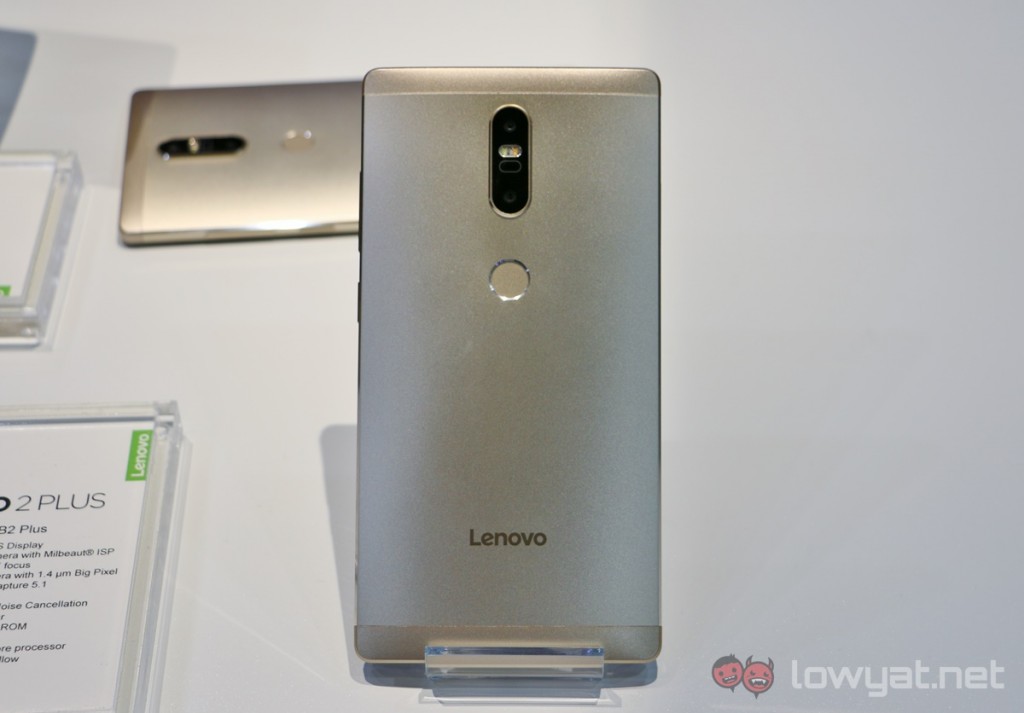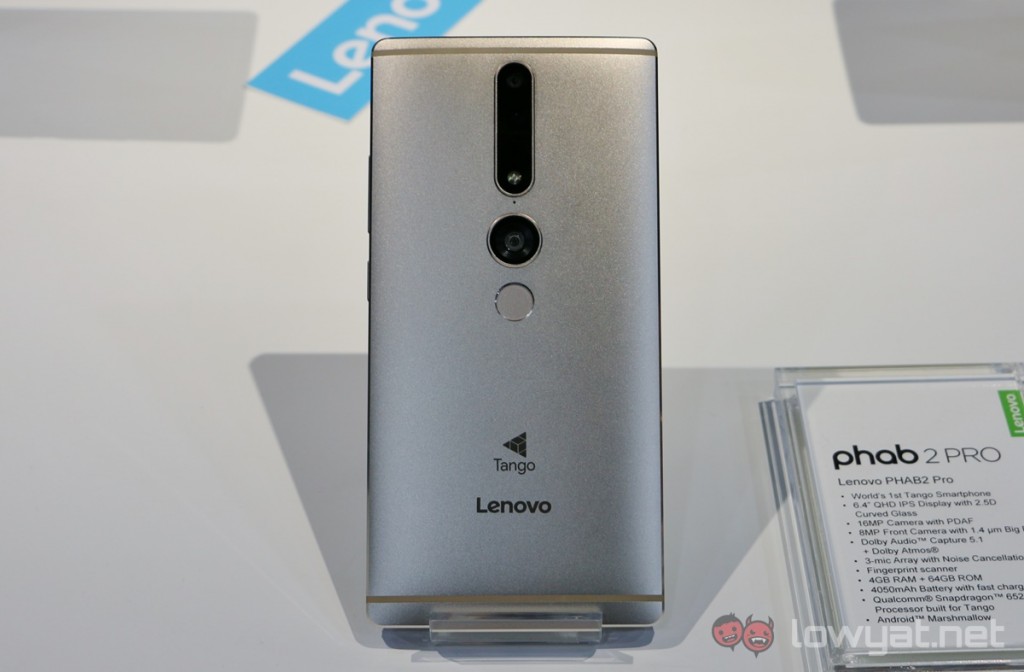Lenovo unveiled the world’s first Tango smartphone earlier this month at its Tech World event, but it’s actually one of three new devices under the new Phab 2 series. Each model is aimed at a specific price point, and dovetails with the more premium Moto Z lineup.
All three Phab 2 phones have a very similar design language, but it’s pretty different from the previous generation. The Phab 2 phones (except the entry-level Phab 2) sport metal bodies, and they are now more angular compared to the original Phab, and with softly curved backs. For phones of this size, the rounded back and flat sides actually make the phones easier to grip.
That being said, don’t expect to be able to use this phone with one hand – the 6.4-inch display on all three phones borders on tablet territory.
As the entry-level model, the Phab 2 does not have most of the fancy features of its more expensive siblings, so it only features a plastic body and no fingerprint sensor. It also only has a 720p resolution on its massive 6.4-inch screen, which is a given considering the $199 price tag. That said, there’s 3GB of RAM on this device, which isn’t something common at this price range.
The mid-range Phab 2 Plus is a significant step up, offering a more premium metal unibody construction, as well as a noticeable bump in specs despite the $100 price increase from the Phab 2.
There’s a 6.4-inch Full HD IPS display, fingerprint sensor, a faster MediaTek processor, and round the back, there’s a 13MP dual-camera setup with PDAF and laser autofocus systems. Again, not something you’d normally find on a device of its price.
The highlight, of course, is with the Tango-enabled phone, the Phab 2 Pro. With its QHD display, metal unibody, and Tango module placed near the centre of the phone, it is almost as if Lenovo designed this phone to be used in landscape mode. After all, most of Tango’s software would need to be used in that orientation.
In terms of software, it is surprising to note how stripped down Lenovo’s Android 6.0 skin is. With the exception of several pre-installed apps, Lenovo opted for stock Android apps which is always a good thing.
There’s also some additions called Lenovo Feature that can be found in the Settings app. Essentially, these are add-on features that can be enabled which are commonly found in other smartphones, such as double-tap to wake, floating shortcuts, and a one-handed keypad.
As the first Tango smartphone, the Phab 2 Pro has a few Tango apps pre-installed, but from the demos at the event, they felt rather unpolished and even buggy at times. That said, there are some specific situations where Tango would be very useful. The Lowe’s app lets you create an accurate virtual copy of your home, allowing you to know if that new sofa will fit into your home.
There are some games too, and they certainly look great in concept, but having seen the demos first hand I think that you’ll need to be very patient to enjoy playing them. The Tango module occasionally misjudges distances between surfaces due to the phone’s movements in the hand, and will interfere with gameplay.
Nevertheless, it is an encouraging first start for Tango, and the Phab 2 phones as a whole are very aggressively priced to be worth taking a look. Large phones are inherently more popular in this part of the world, so Lenovo’s mobile strategy of dovetailing the Phab phones with the flagship Moto range could take off later this year.










No comments:
Post a Comment